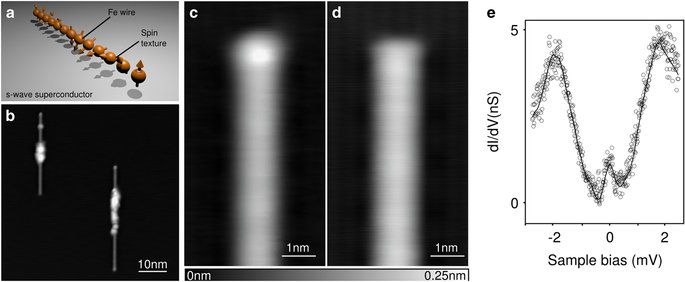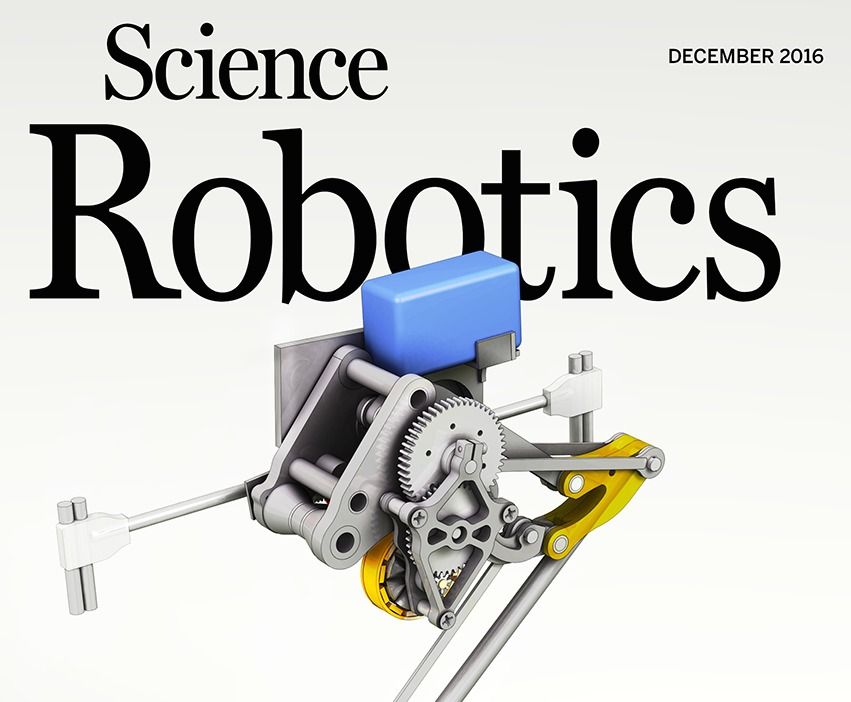Page 10684
Dec 6, 2016
Conroy’s quantum warning: be ready
Posted by Karen Hurst in categories: computing, economics, government, quantum physics, security
More folks warning others that you better be planning for a QC transformation as it is coming and is going to be probably the largest scale transformation the we have seen in the history of technology.
Former communications minister, Stephen Conroy has warned that Australian government technology decision makers need to start preparing for the development of quantum computing.
The former senator made the warning during a panel session at the Australian Computer Society’s Reimagination conference late last week. While still in its nascent development stages, the former minister for broadband communications and the digital economy said that it could have major national security implications.
Dec 6, 2016
How the CRISPR Patent Fight Could Shape the Future of Genetic Engineering
Posted by Shane Hinshaw in categories: bioengineering, biotech/medical, genetics
On Tuesday, the two feuding parties of the CRISPR gene editing patent fight entered the boxing ring: attorneys for each side made oral arguments before three-judge panel, in a case that not only puts billions of potential dollars at stake, but could define the future of genetic engineering.
Dec 6, 2016
Rhythm of breathing affects memory and fear
Posted by Bruno Henrique de Souza in categories: biotech/medical, neuroscience
Northwestern Medicine scientists have discovered for the first time that the rhythm of breathing creates electrical activity in the human brain that enhances emotional judgments and memory recall.
These effects on behavior depend critically on whether you inhale or exhale and whether you breathe through the nose or mouth.
In the study, individuals were able to identify a fearful face more quickly if they encountered the face when breathing in compared to breathing out. Individuals also were more likely to remember an object if they encountered it on the inhaled breath than the exhaled one. The effect disappeared if breathing was through the mouth.
Dec 6, 2016
Ukrainian Scientist Creates Battery That Can Power Smartphones for 12 Years
Posted by Shane Hinshaw in categories: chemistry, mobile phones, transportation
Ukrainian scientist Vladislav Kiselev claims that he has developed a type of battery that can power gadgets like smartphones and even cars for up to 12 years, without having to be recharged.
Kiselev, a senior researcher at the Institute of Bioorganic Chemistry and Petrochemistry in Kiev, and professor at Ukraine’s National Academy of Sciences, unveiled his intriguing battery prototype during the 2016 edition of Sikorsky Challenge, a prestigious international competition for research projects. The matchbox-like device looks fairly unimpressive, but the Ukrainian scientist claims that it has been continuously powering electrical devices for a year and four months without a single recharge, and will continue to do so for the next 11 years. That’s because his “battery” produces energy instead of simply storing it.
Dec 6, 2016
Google Says It Will Run Entirely on Renewable Energy in 2017
Posted by Blair Erickson in categories: internet, solar power, sustainability
The internet giant has spent years migrating the source of electric power at its giant data centers to sources like wind turbines and solar panels.
Dec 6, 2016
BERNSTEIN: China’s insane spending on robotics is fundamentally changing capitalism
Posted by Andreas Matt in categories: economics, robotics/AI
‘The age of industrialization is coming to an end,’ due to the rise of robotics and China’s modernising economy, argues Bernstein.
Dec 6, 2016
New journal Science Robotics is established to chronicle the rise of the robots
Posted by Shane Hinshaw in categories: robotics/AI, science
Robots have been a major focus in the technology world for decades and decades, but they and basic science, and for that matter everyday life, have largely been non-overlapping magisteria. That’s changed over the last few years, as robotics and every other field have come to inform and improve each other, and robots have begun to infiltrate and affect our lives in countless ways. So the only surprise in the news that the prestigious journal group Science has established a discrete Robotics imprint is that they didn’t do it earlier.
Editor Guang-Zhong Yang and president of the National Academy of Sciences Marcia McNutt introduce the journal:
In a mere 50 years, robots have gone from being a topic of science fiction to becoming an integral part of modern society. They now are ubiquitous on factory floors, build complex deep-sea installations, explore icy worlds beyond the reach of humans, and assist in precision surgeries… With this growth, the research community that is engaged in robotics has expanded globally. To help meet the need to communicate discoveries across all domains of robotics research, we are proud to announce that Science Robotics is open for submissions.
Continue reading “New journal Science Robotics is established to chronicle the rise of the robots” »
Dec 6, 2016
The Institute for Critical Infrastructure Technology
Posted by Roman Mednitzer in categories: cybercrime/malcode, internet
New report: rise of the machines: the dyn attack was just A practice run.
As the adversarial threat landscape continues to hyper-evolve, America’s treasure troves of public and private data, IP, and critical infrastructure continues to be pilfered, annihilated, and disrupted. The Mirai IoT botnet has inspired a renaissance in adversarial interest in DDoS botnet innovation based on the lack of fundamental security-by-design in the Internet and in IoT devices, and based on the lack of basic cybersecurity and cyber-hygiene best practices by Internet users.
http://icitech.org/icit-publication-the-rise-of-the-machines…ctice-run/
Continue reading “The Institute for Critical Infrastructure Technology” »
Dec 6, 2016
Germany’s Wildly Complex Fusion Reactor Is Actually Working
Posted by Shane Hinshaw in category: nuclear energy
The Wendelstein 7-X reactor, which uses a complex design called a stellerator, is performing just like it was predicted to.


















